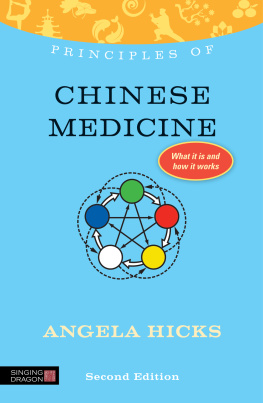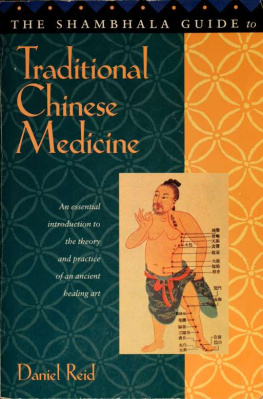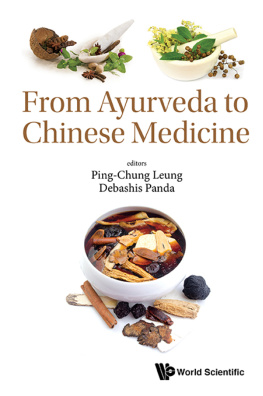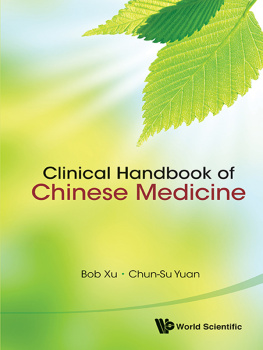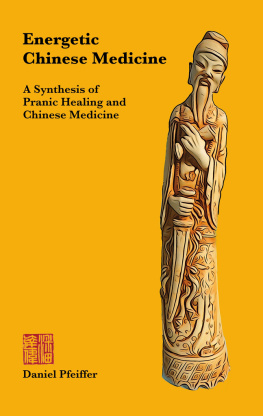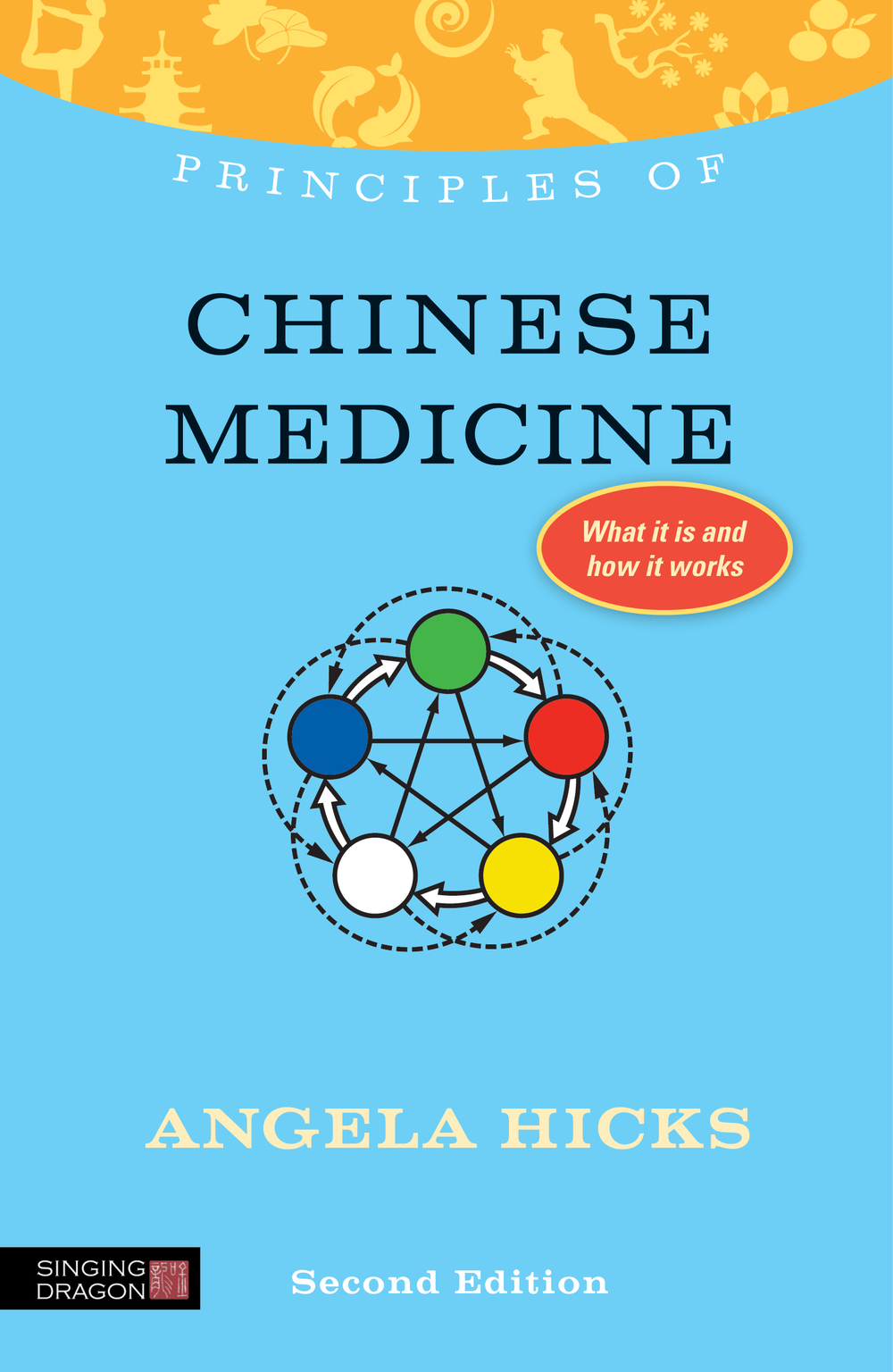
PRINCIPLES OF
CHINESE MEDICINE
other titles in the series
PRINCIPLES OF
THE ALEXANDER TECHNIQUE
Jeremy Chance
PRINCIPLES OF
BACH FLOWER REMEDIES
Stefan Ball
PRINCIPLES OF
CHINESE HERBAL MEDICINE
John Hicks
PRINCIPLES OF
THE ENNEAGRAM
Karen A. Webb
PRINCIPLES OF
HYPNOTHERAPY
Vera Peiffer
PRINCIPLES OF
KINESIOLOGY
Maggie La Tourelle with Anthea Courtenay
PRINCIPLES OF
NLP
Joseph OConnor and Ian McDermott
PRINCIPLES OF
REFLEXOLOGY
Nicola Hall
PRINCIPLES OF
REIKI
Kajsa Krishni Borng
PRINCIPLES OF
TIBETAN MEDICINE
Dr. Tamdin Sither Bradley
PRINCIPLES OF
CHINESE MEDICINE
What it is, how it works, and what it can do for you
Second Edition
Angela Hicks

London and Philadelphia
This edition published in 2013
by Singing Dragon
an imprint of Jessica Kingsley Publishers
116 Pentonville Road
London N1 9JB, UK
and
400 Market Street, Suite 400
Philadelphia, PA 19106, USA
www.singingdragon.com
First published in 1996 by Thorsons, an imprint of HarperCollins
Copyright Angela Hicks 1996, 2013
All rights reserved. No part of this publication may be reproduced in any material form (including photocopying or storing it in any medium by electronic means and whether or not transiently or incidentally to some other use of this publication) without the written permission of the copyright owner except in accordance with the provisions of the Copyright, Designs and Patents Act 1988 or under the terms of a licence issued by the Copyright Licensing Agency Ltd, Saffron House, 610 Kirby Street, London EC1N 8TS. Applications for the copyright owners written permission to reproduce any part of this publication should be addressed to the publisher.
Warning: The doing of an unauthorised act in relation to a copyright work may result in both a civil claim for damages and criminal prosecution.
Library of Congress Cataloging in Publication Data
A CIP catalog record for this book is available from the Library of Congress
British Library Cataloguing in Publication Data
A CIP catalogue record for this book is available from the British Library
ISBN 978 1 84819 130 3
eISBN 978 0 85701 107 7
Printed and bound in Great Britain
CONTENTS
AUTHORS NOTE
This book is written as an informative guide to Chinese medicine and is not meant as a self-help book for treatment.
I have capitalised Chinese medicine terminology in order to differentiate it from standard English terms. For instance, the Liver in upper case indicates the Chinese medicine term (i.e., the Liver and its Chinese medicine functions). The liver in lower case indicates the liver as it is described in Western medicine.
ACKNOWLEDGEMENTS
My thanks to all of the people who have helped me to write this book.
First, thank you to all of the patients who talked with me about their experiences of acupuncture. Thanks also to the patients of Tony Brawn and Caroline Root who allowed me to interview them about their experiences of taking herbs, patients of Sarah Pritchard who talked about receiving tui na and patients of Jill Glover and Leslie Jenkins who discussed changes to their diet. Thanks as well to all of those people who informed me of their experiences of practising Qigong or who filled in questionnaires about it. The names of all patients have been changed to protect confidentiality.
Second, thanks to the practitioners who helped me with essential information that Ive used in this book and to Judith Clark for so thoroughly reading through and proofing the chapters. Also thanks to Bill Ryan for his advice on the Qigong chapter, Kevin Young for the tui na chapter and Michael Pringle for the Chinese herbal medicine chapter.
Many people have helped me to deepen my appreciation of Chinese medicine. JR Worsley trained me to understand the underlying essence of a patient. Bruce Frantzis, my Qigong teacher, has enabled me to increase my understanding of Qigong. Im also grateful to Rose Gladden, the healer, who while she was alive was a major influence on my awareness of holistic treatment and healing the spirit.
My thanks to Jessica Kingsley, Victoria Peters and Bethany Gower, and all at Singing Dragon for their support and care bringing this book to print.
Many thanks and huge love to John, my husband, who unfailingly supports and encourages me.
Introduction
The aim of this book is to give you a clear explanation about Chinese medicine and its therapies acupuncture, Chinese herbs, tui na massage, Qigong exercises and diet.
I have practised Chinese medicine since 1976 and since that time the only Western medicine treatment I have taken is one aspirin. I am now in my 60s and have stayed healthy through having treatment from these five therapies.
This does not mean that I havent been ill. I have. But, in general, Chinese medicine treatment has nipped any problems in the bud and kept me well. My passion for Chinese medicine has never left me and I feel privileged to have been able to give treatments, teach and keep well for all this time.
When I first studied acupuncture it was the main Chinese medicine treatment available in the West. Reference to acupuncture all that time ago often met with a blank look or possibly an expression of puzzlement. Many doctors at that time showed hostility at its very mention.
Now there are many more qualified practitioners of Chinese medicine. These treatments are better understood and a realistic choice for many people who wish to use a natural medicine with few side effects.
There is no need to make a choice between Chinese medicine and Western medicine we can use both and both are useful in different situations. For example, if I broke my arm I would certainly go to the accident and emergency department first! Fortunately, practitioners of both Chinese and Western medicine are more mutually respectful than they were in the past. They know that each has a completely different, but valuable, perspective on treatment.
There have also been many misunderstandings in the past, not least because of a difference in language. Chinese medicine tends to use more poetic terms when diagnosing and treating. For example, a practitioner talks about yin and yang, Qi , and Jing -essence or Wind and Dampness. You will read more about these terms in Chapters 1 to 3 and will hopefully understand that they are quite practical and down to earth in their usage and that Chinese medicine has its own clear, although different, logic.
So lets compare Chinese medicine with Western medicine so that we can assess how each one is used in treatment.
The differences between Chinese medicine and Western medicine
Chinese medicine tends to do the following things:
Treat the person rather than the symptoms
We could say that Chinese medicine treats people while Western medicine treats diseases. A Chinese medicine practitioner will look at the whole person and the underlying reasons for her or him becoming ill. In comparison, Western medicine will pay more attention to treating the persons symptoms.
For example, when considering a symptom such as a headache, a Chinese medicine practitioner looks for the underlying cause and will ask patients about the nature of their symptoms as well as observing their tongue and feeling 12 pulses on the wrist. The cause may be a number of different possibilities, including the functioning of the Liver, Kidney or Spleen energy. Treatment will aim to help the person to achieve a better balance in their energy so the cause of the headaches is eliminated.
Next page
